Kai Yufuin by Kengo Kuma revisits Japanese farmhouse architecture
Hoshino Resorts has launched Kai Yufuin, a hot spring ryokan hotel by Kengo Kuma on the island of Kyushu in the Ōita Prefecture
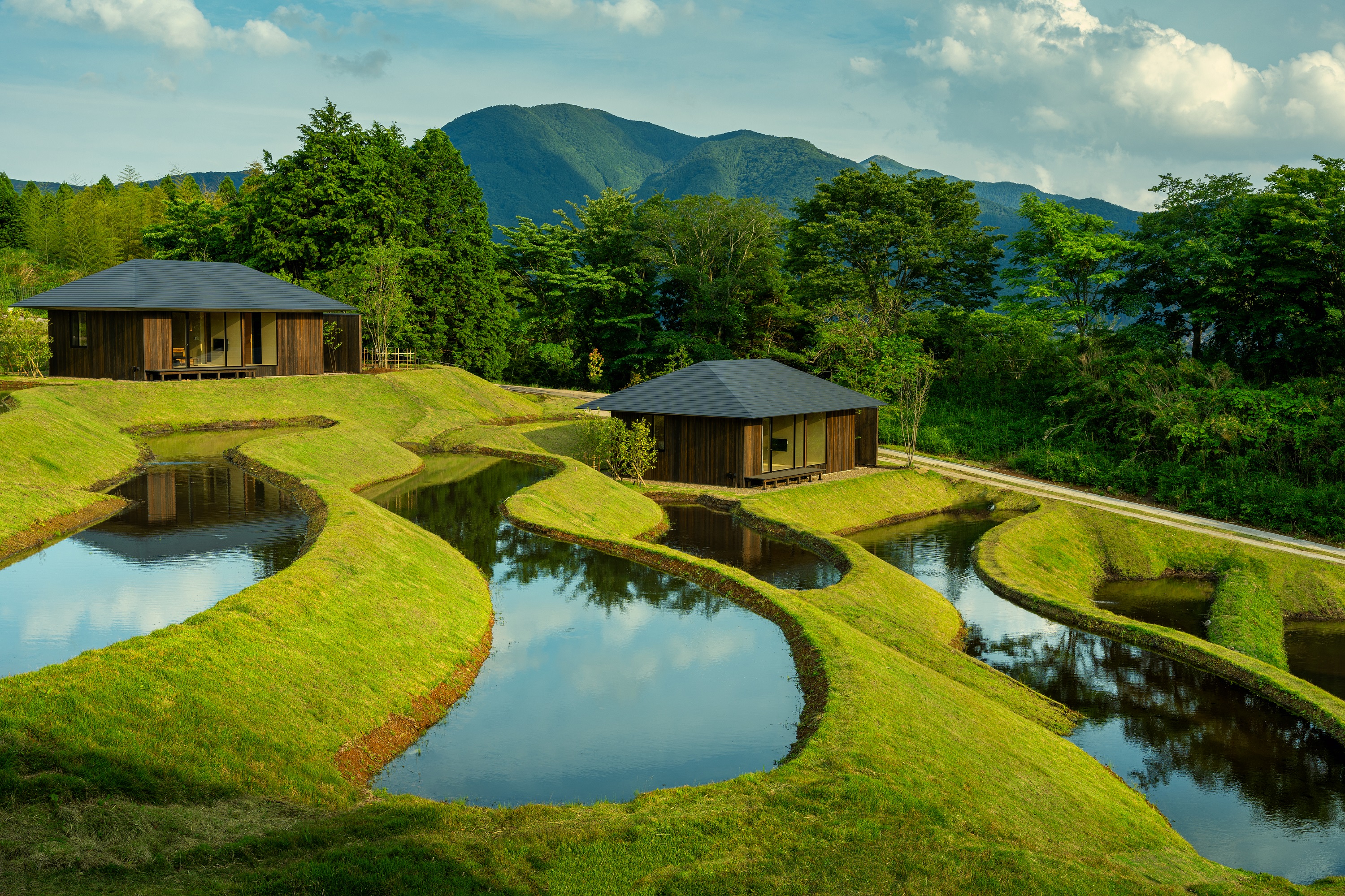
Built around a cascading valley of rice terraces that reflect the horizon’s endless play of colours, the Kai Yufuin hot spring ryokan by Hoshino Resorts, is one of Kengo Kuma & Associates' latest works. Composed of a public building, a bathhouse, guest rooms and separate villa suites, the project is defined by elements of traditional Japanese architecture and the region's farmhouse vernacular that form the basis of the design. Located on the island of Kyushu in the Ōita Prefecture, famous for its hot springs especially in and around the city of Beppu, the Yufuin valley basin has an abundant resource of mineral-rich water. Both these elements unite in this project to form the identity of Kengo Kuma's newest Japanese hospitality offering.
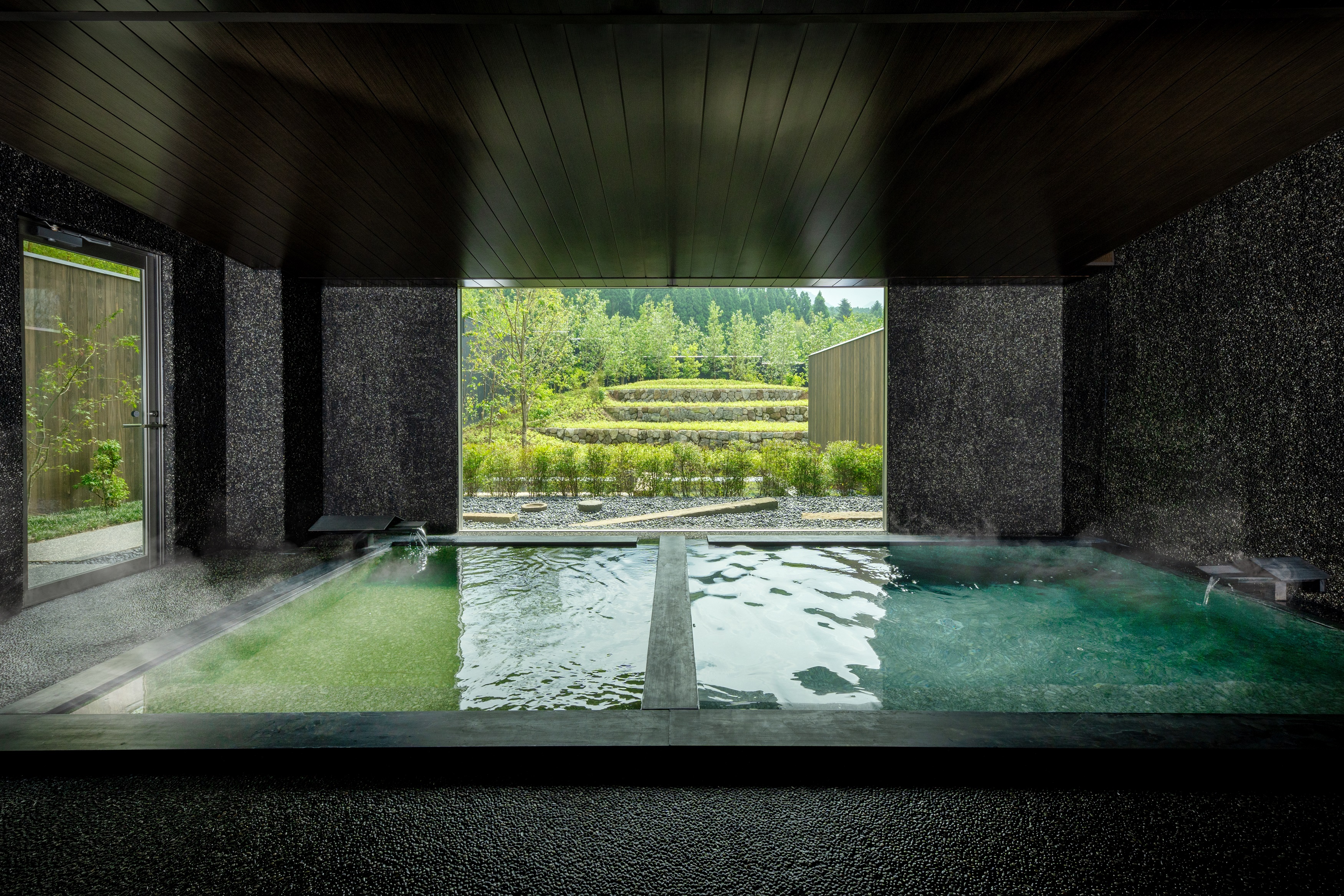
The lobby floor – made from a mixture of gravel, soil and lime – invokes tataki, or the traditional dirt floor entrance of an agricultural home; while the spherical shape of the front desk mimics kamado, the traditional farmhouse kitchen stove. Representative of an itama (room with wooden floor), the Travel Library has flooring made of bamboo, as well as lighting fixtures designed by Kuma from washi paper, inspired by the fluttering motions of local butterflies in the fields. Behind the library, the Rice Terrace Deck is a public space that looks out over the rice fields, with wooden flooring and seats composed of aromatic shichitoi (perennial grass) tatami, a material whose production and use are being revitalized in the region.
The vaporous indoor pool of Kai Yufuin’s bathhouse has dark, subdued colours, with black wood-grain panels plus walls and floors made of black pebbles, allowing the views of the imposing Mount Yufu to remain unadulterated. In the semi-private dining area, the walls are made of washi paper designed with local elements such as straw, rice, bamboo and shichitoi grass, once more evoking the aesthetics of a traditional farmhouse. The modest lighting, hanging over each table and made from wrinkled washi paper and thin bamboo sticks, is another Kuma original.
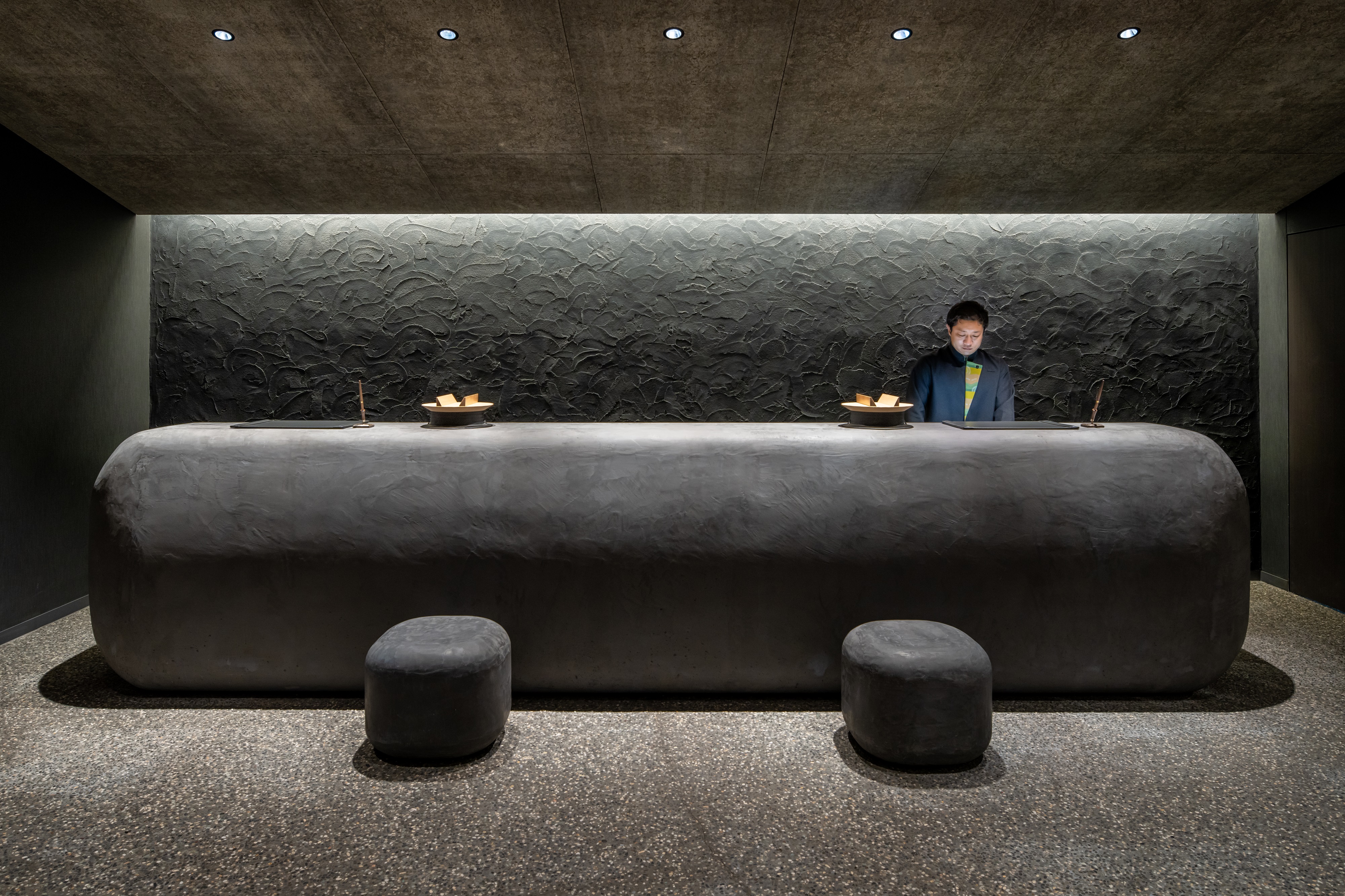
One of the most distinctive features of the property is its independent villa suites, bungalows nestled among the rice fields as single-storey farmhouses. Made of wood, the suites have a hipped roof shape – with black cedar planks typical of west Japan – which deviates from traditional Japanese architecture through the thin details of the eaves and the exterior's strong textures. The interior's cedar floors are finished with a technique called uki-zukuri, which allows the pattern of the wood to remain visible, while the veranda, in the back of the living room, opens it up further towards the landscape.
The structures, facing a Sawtooth oak forest, stand on a gentle slope and have their own private bathhouses made from cedar. Nodding to its location in a prefecture that produces the largest amount of giant bamboo timber in Japan, the hotel’s main guest building features rooms that are an expression of local bamboo crafts, and include bamboo headboards and sofas. Another distinct element in these rooms is the lighting, featuring a unique spiral shape made by shichitoi grass craftsman Chika Iwakiri and inspired by traditional firefly baskets, a further design detail directly connecting the property to its environment's rich heritage.

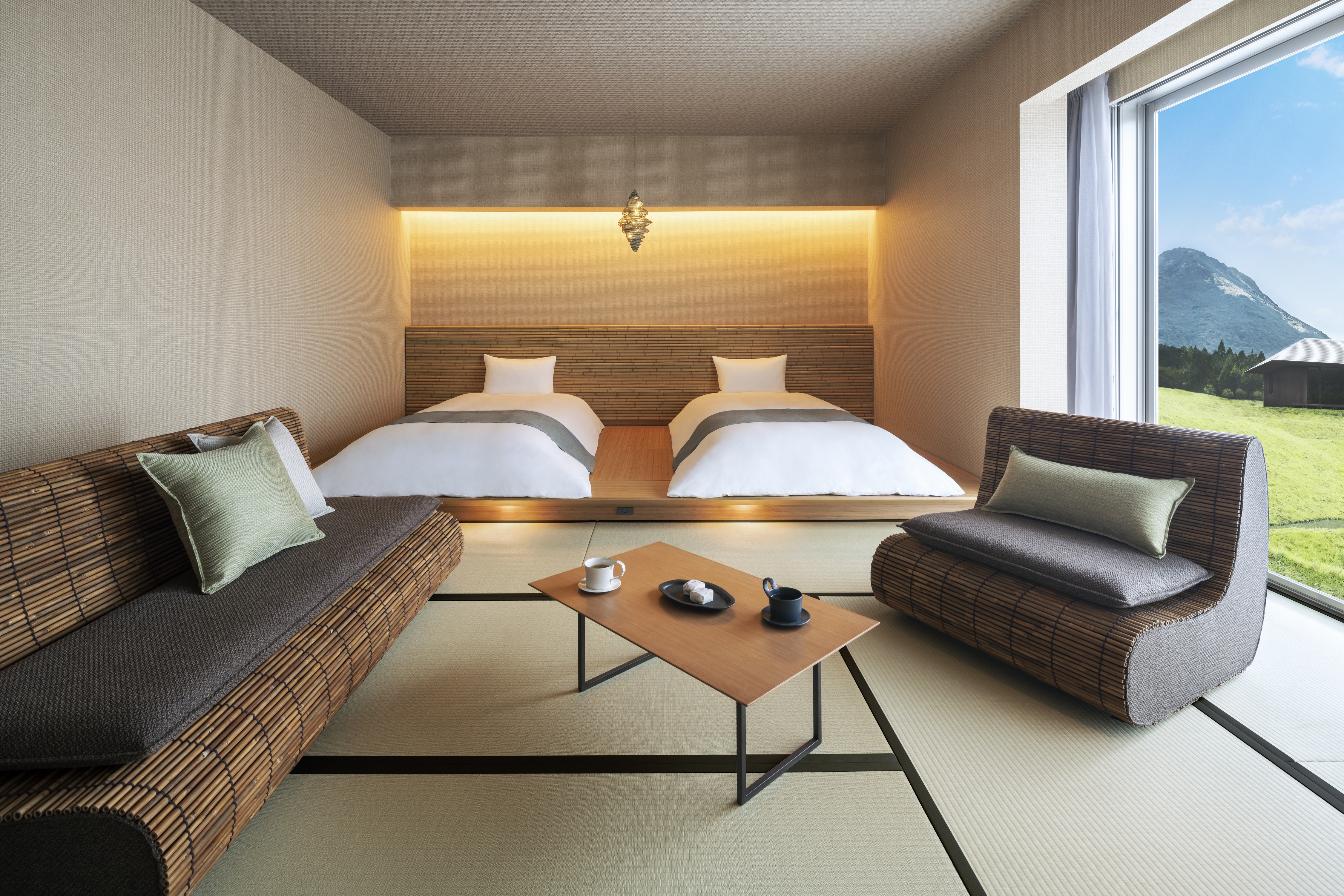

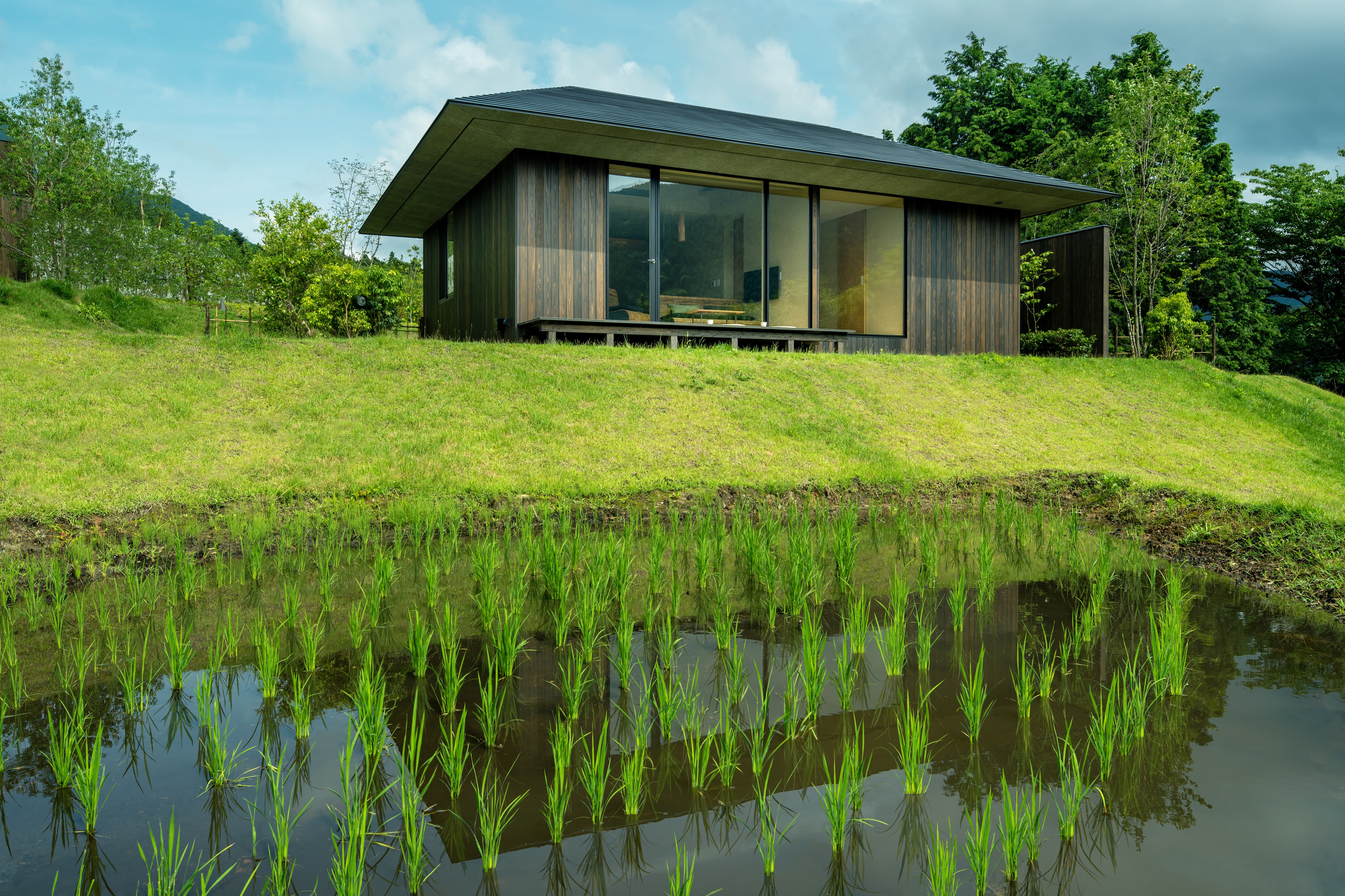


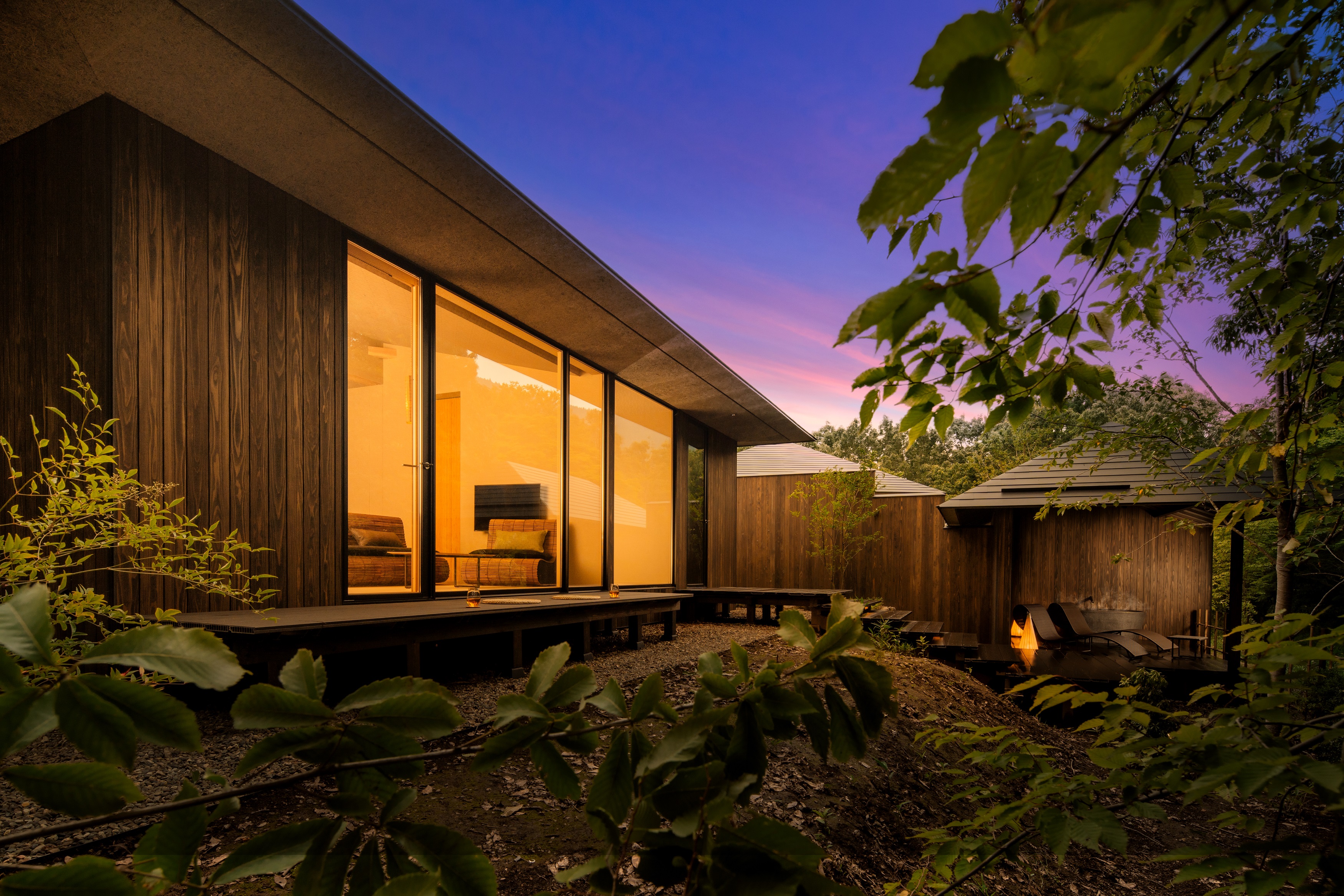

INFORMATION
Receive our daily digest of inspiration, escapism and design stories from around the world direct to your inbox.
Feride Yalav-Heckeroth is a freelance travel writer based between Istanbul and Bodensee. Her writing has been published in Kinfolk, Brownbook, Travel + Leisure, CNN Travel and Conde Nast Traveler. She's also the author of her own guidebook, The 500 Hidden Secrets of Istanbul.
-
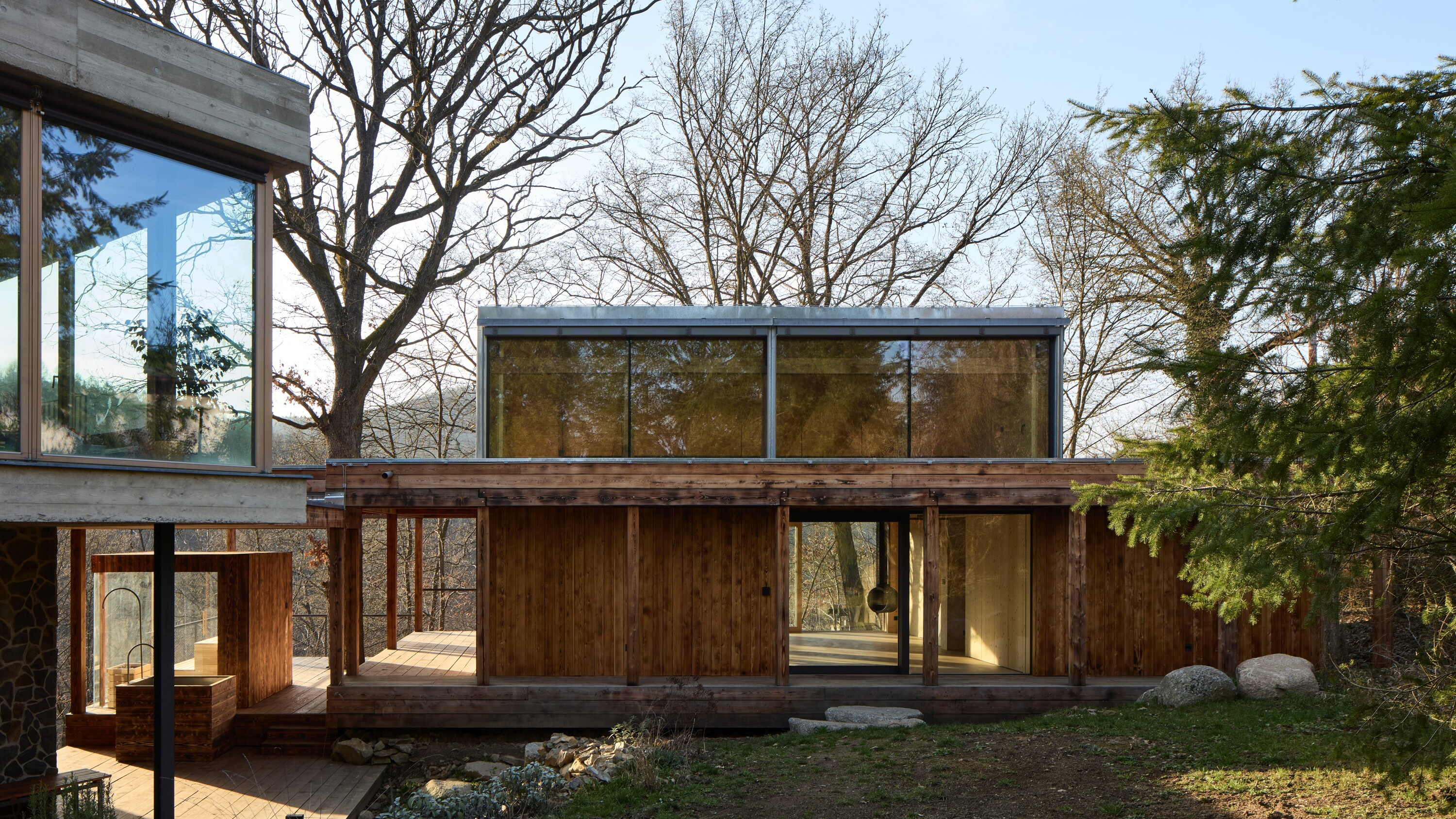 A new timber studio in the Czech Republic is carefully integrated into its hillside site
A new timber studio in the Czech Republic is carefully integrated into its hillside sitePäivä Architekti’s Czech Studio Above the Golden Canyon takes advantage of impressive views
-
 Aussie vibes meet Parisian grandeur? This Sydney apartment pulls off the unlikely combination
Aussie vibes meet Parisian grandeur? This Sydney apartment pulls off the unlikely combinationLongtime clients of Dylan Farrell Design trusted the studio to go bold with the gut renovation of their Sydney flat – now an intriguing study in contrasts
-
 Carlo Ratti reflects on his bold Venice Architecture Biennale as it closes this weekend
Carlo Ratti reflects on his bold Venice Architecture Biennale as it closes this weekendThe Venice Architecture Biennale opens with excitement and fanfare every two years; as the 2025 edition draws to a close, we take stock with its curator Carlo Ratti and ask him, what next?
-
 A cinematic members’ club rises in Japan’s forested hills
A cinematic members’ club rises in Japan’s forested hillsJoyce Wang Studio unveils The Magarigawa Club Clubhouse in Chiba
-
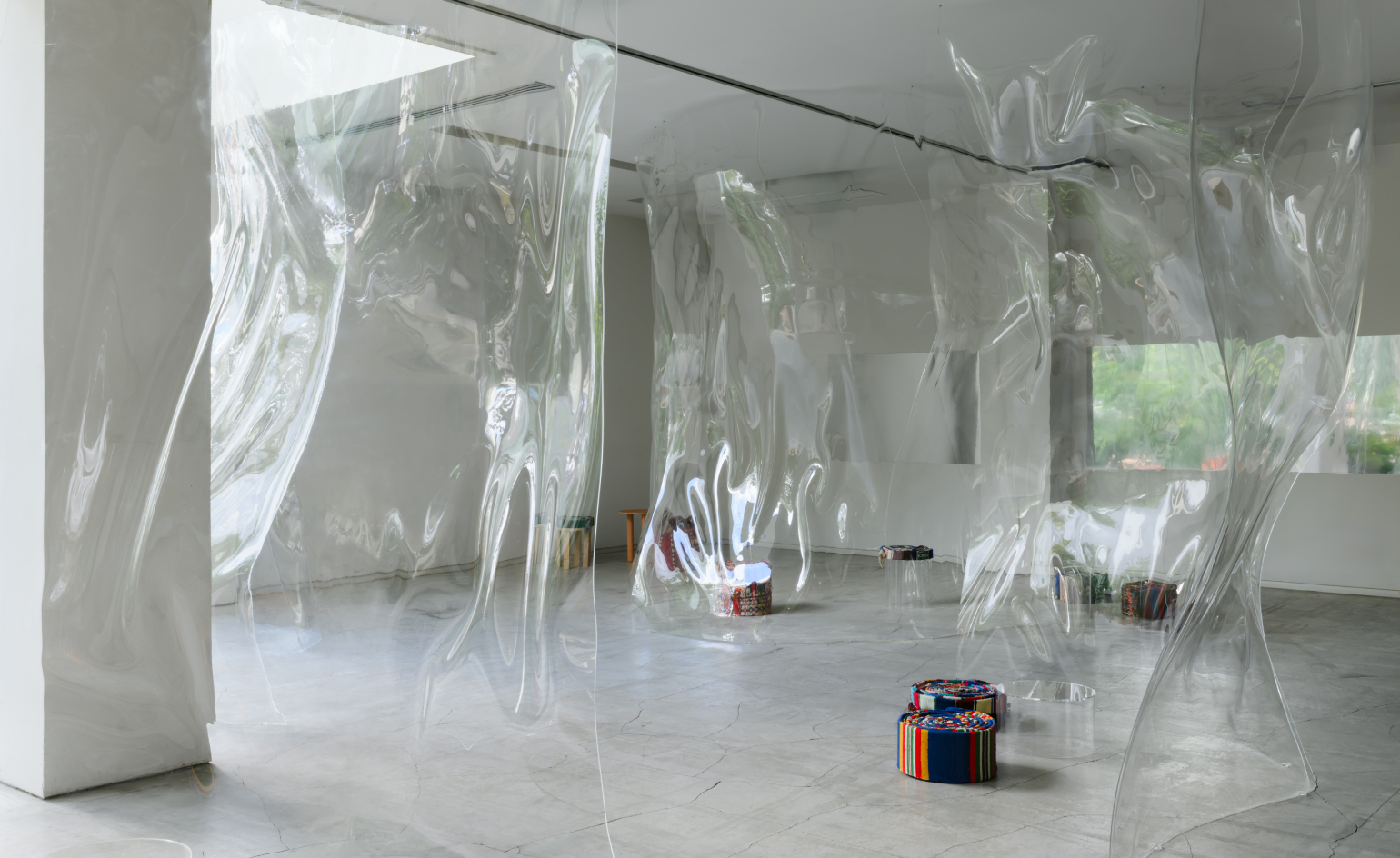 How Ichio Matsuzawa designed the almost-invisible bar defining Art Week Tokyo 2025
How Ichio Matsuzawa designed the almost-invisible bar defining Art Week Tokyo 2025During the 2025 edition of AWT, Wallpaper* met the Japanese architect to explore architecture as sensation, not structure
-
 In Sou Fujimoto’s far-flung Not A Hotel villa, solitude feels almost planetary
In Sou Fujimoto’s far-flung Not A Hotel villa, solitude feels almost planetaryAn underwater sauna, an infinity pool and a circular courtyard garden are just a few of the highlights at Not A Hotel’s latest outpost, on Japan’s Ishigaki Island
-
 Check into a new pocket-sized Tokyo hotel
Check into a new pocket-sized Tokyo hotelSoil Nihonbashi Hotel brings greenery, warmth and a neighbourhood spirit to a quiet corner near Tokyo Central Station
-
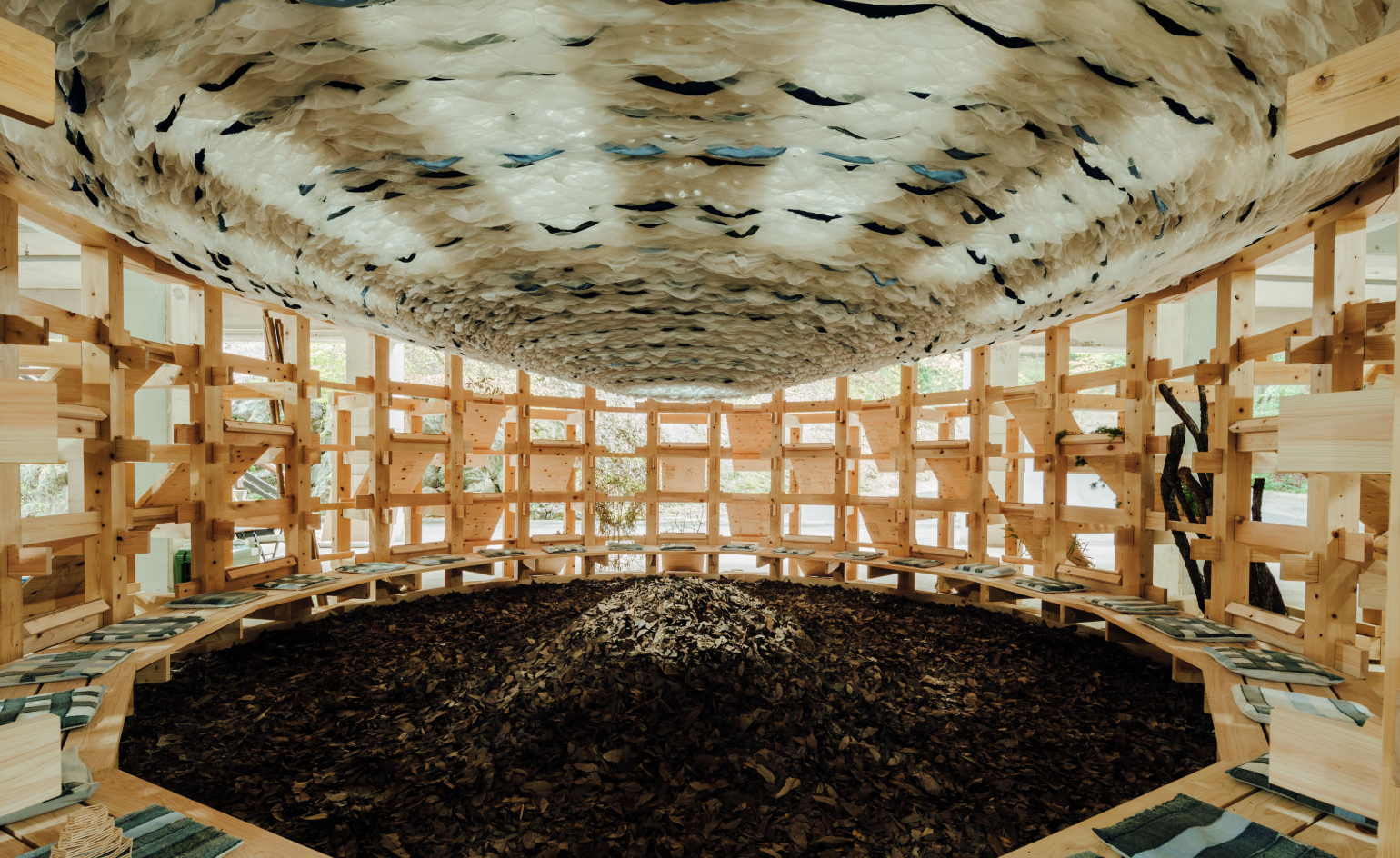 Explore Hiroshima through the eyes of those who rebuilt it
Explore Hiroshima through the eyes of those who rebuilt itJapan’s architectural phoenix continues to rise. ‘The Hiroshima Architecture Exhibition 2025’ explores a legacy of memory and modernism across 23 architects and artist groups
-
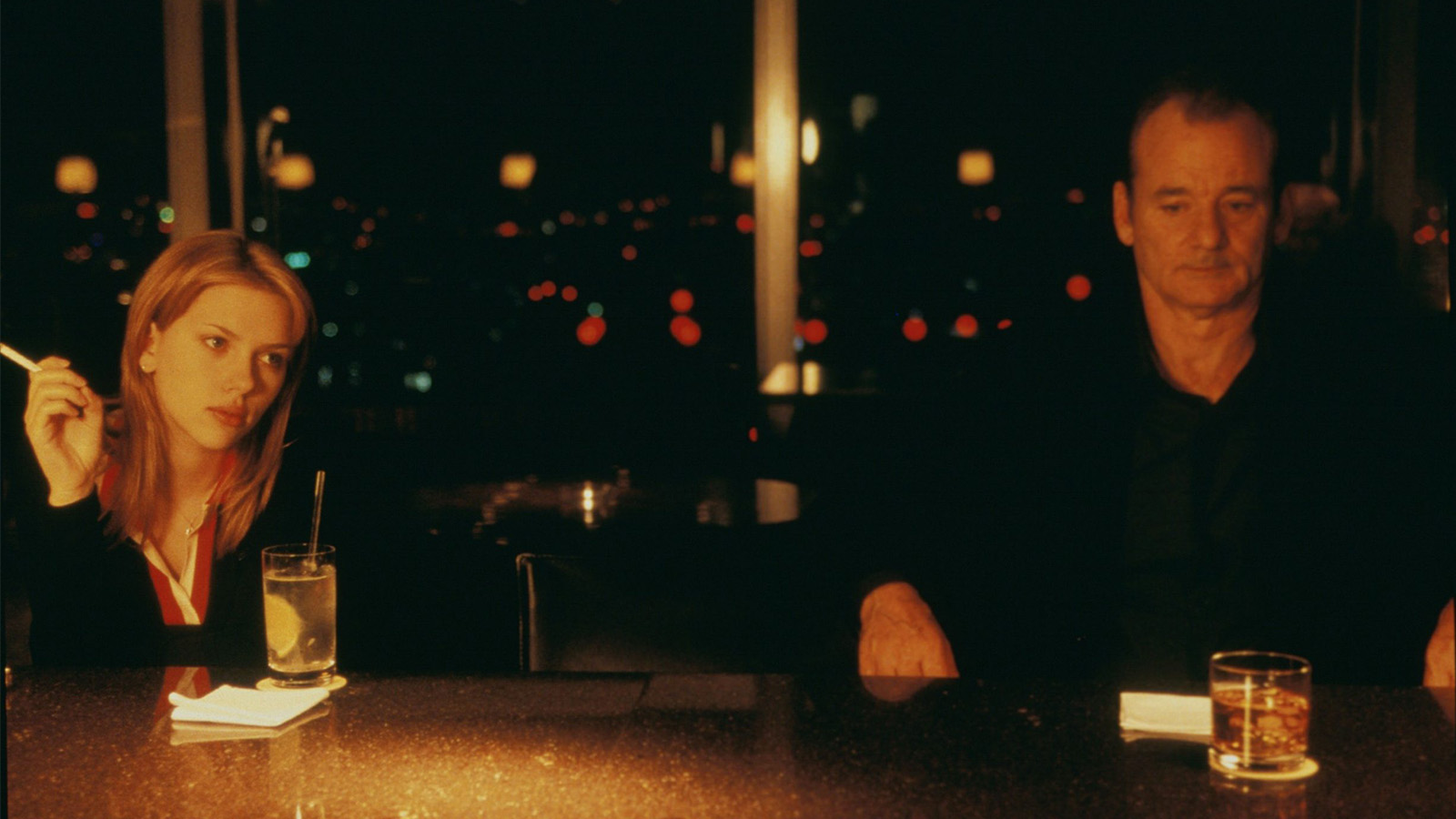 Will the revamped Park Hyatt Tokyo keep its cinematic soul?
Will the revamped Park Hyatt Tokyo keep its cinematic soul?As Park Hyatt Tokyo prepares to reopen after an extensive transformation, film fans wonder: will it still evoke Sofia Coppola’s dreamscape?
-
 Stay at Patina Osaka for a dose of ‘transformative luxury’ in western Japan
Stay at Patina Osaka for a dose of ‘transformative luxury’ in western JapanFrom nature-inspired interiors to sound-tracked cocktails and an unusually green setting, Patina Osaka is a contemporary urban escape that sets itself apart
-
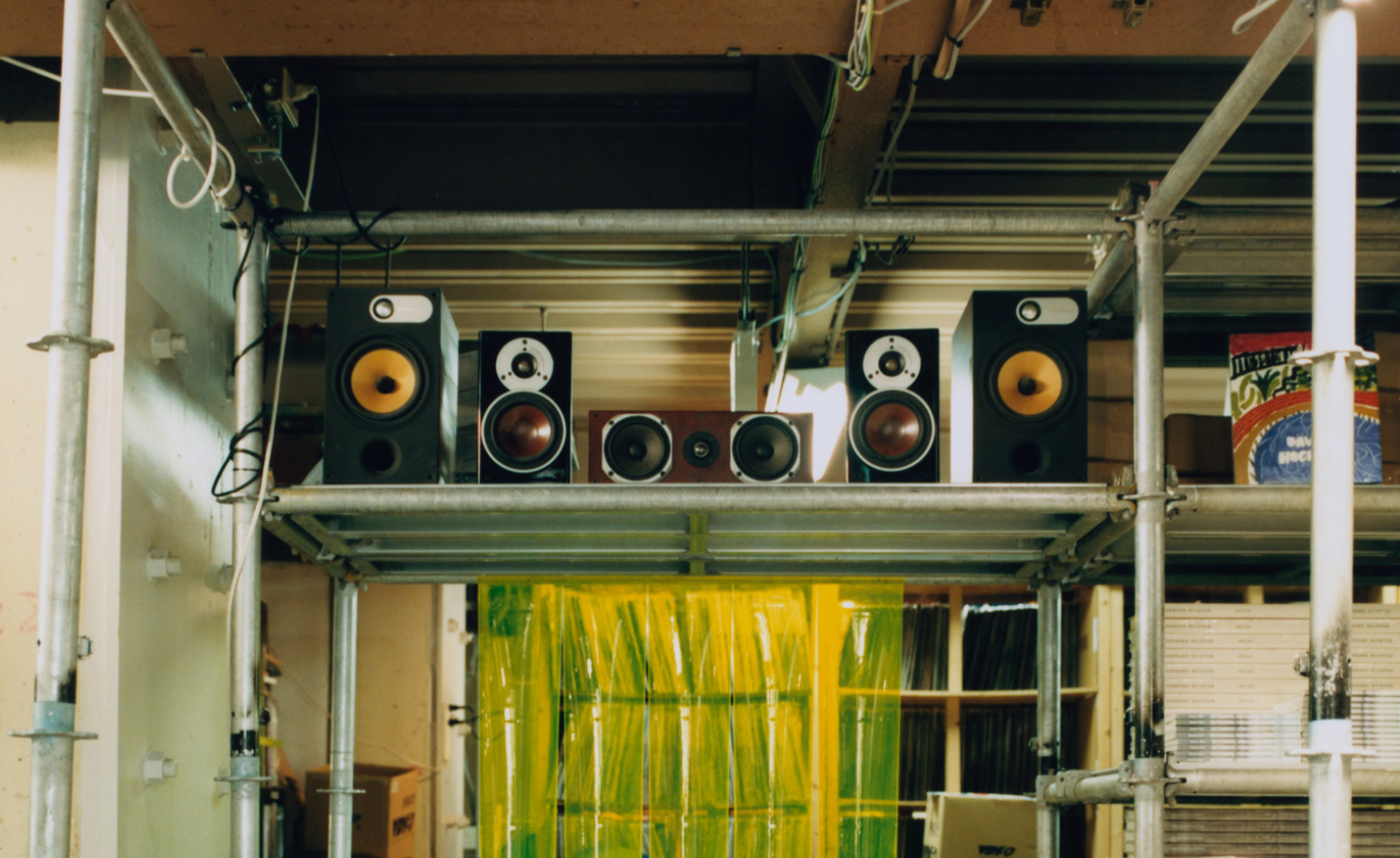 Tune into the rhythm of Tokyo’s most ambitious record shop
Tune into the rhythm of Tokyo’s most ambitious record shopVinyl Delivery Service in east Tokyo’s Skwat Kameari Art Centre is spinning a new narrative for the traditional record store model